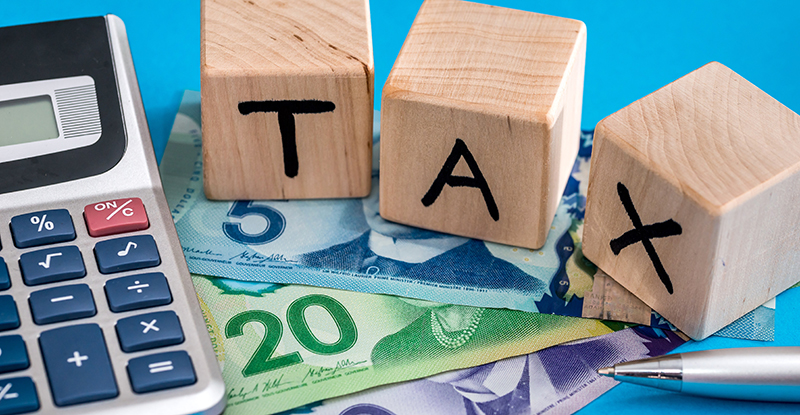
The most pressing question that potential retirees ask me is: Will I have enough money to fund my retirement lifestyle? That’s why, it’s not surprising that in a recent survey, baby boomers expressed that they are more afraid of running out of money than they are of dying.
Creating an automatic savings plan is the most straight-forward advice I can give to address that question. You regularly divert a small amount of income from your paycheque to a savings plan. It is called paying yourself first, and it is critical to helping to ensure you have the resources available for a comfortable retirement; however, it is successful only when you live within your means, by spending less than you are earning.
How can I plan for a comfortable retirement?
When planning for a comfortable retirement, the first step is to understand your expectations and the resources you have to meet them. I work closely with my clients to identify specific objectives and associated time horizons. Without this step, we cannot determine the right style, type and balance of investments.
Once a personalized savings plan is designed, we can then analyze your expenses and income to find any spending gaps and ways to potentially cover them. For example, I can help you calculate your pension income, Canada Pension Plan and Old Age Security amounts, and determine if they will be sufficient to cover your projected expenses. We can also review your investments to understand if they will provide enough additional income to close any gap.
Your income plan should include discretionary expenses (those items that you could reduce or eliminate) and nondiscretionary expenses (must-haves such as food, clothing, and shelter). Major expenses may not be fully accounted for, but must be projected far into the future. For example, do you expect to open a winery in the Okanagan? If so, this goal must be identified as soon as possible and worked into the retirement income and investment plan. Investments need to be identified appropriately for short-, medium- and long-term goals.
What is my investment risk tolerance?
After we have determined goals and time frames, we can assess the level of risk that you are willing to accept and design an investment portfolio that reflects your wealth needs. Ideally, you want to attain the rate of return needed to achieve those objectives, while reducing the risk as much as possible.
To help assess my clients’ risk tolerance, I ask them to complete a questionnaire. It provides clarity on how much risk they want to assume and sets expectations for both of us. From there, we set up the appropriate asset allocation, keeping in mind how much risk the portfolio could tolerate while still meeting your needs.
When we examine performance, cost, volatility and overall expected return, we are striving for the right balance that will serve your stated objectives.
Related articles
- Retiring? Evaluate these five investment risks first
- Assess and address: How to transition your business before retiring
- Plan in advance: Leave a lasting legacy
How to find the right asset allocation
An effective way to explain allocation is what we call the bucket system. Imagine three buckets — one for short-term investing, one for medium term, and one for longer term. Generally, the first bucket would contain cash used for upcoming expenses in the next year or two. The second would contain fixed income investments used for upcoming expenses in two or three years beyond that. The third bucket would contain equities and would be used for expenses anticipated beyond five years.
The portfolio must include money for short-term spending needs and living expenses; it should also address longer-term needs and provide growth investments that beat inflation. This represents a comprehensive portfolio required for a successful retirement.
Here are five portfolio types for a client’s particular situation and risk tolerance:
Capital preservation
For investors seeking to avoid risk and volatility and who will accept a return that is lower than average. The aim is to protect principal and also gain some income from safer investments. Much of the portfolio is in fixed income investments, along with some stocks to offset inflation.
Income
The investor accepts modest risk to principal to get a higher yield. The objective is to obtain a dependable income stream, while also seeking to protect principal. Stocks are selected for their current yield, as well as the potential for dividend growth to counter inflation.
Income and growth
The investor is willing to take on risk to achieve growth, while maintaining income. The aim is a balance between bonds, for current income, and stocks, for growth of principal and for dividends. A cross section of stocks seeks to produce income to fund current needs, dividend growth to offset inflation, and capital appreciation to build wealth.
Growth
The investor will accept volatility in the pursuit of above-average returns, with the objective of building wealth over the long term rather than producing current income. The portfolio consists of companies with earnings growth that are consistently above average.
Aggressive growth
The investor will take on more substantial risk, with more concentrated positions, hoping for higher returns over the long term. Those returns may vary widely from year to year. The aim is for higher-than-average capital growth. The portfolio is heavier on stocks, and current income is not a concern.
A general rule is: the sooner you will need the money, the less investment risk you should accept. However, a sudden change in an objective or asset allocation can greatly alter the outcome and directly affect your future retirement.
A portfolio up to the task
How can you know how much income you will need unless you know what you want to do? Before retirement, you need to step back and think about what really matters and then begin building toward that end. It is better not to depend solely on the sale of a house or an expected inheritance to fund your retirement.
When nearing retirement, having a solid plan and a portfolio that is up to the task can greatly assist in achieving your lifestyle goals. Sometimes, it is better to embark early on and stick with your goals. Only then will you be able to develop a plan that meets your objectives.



